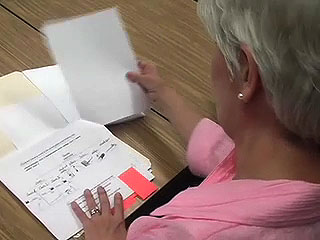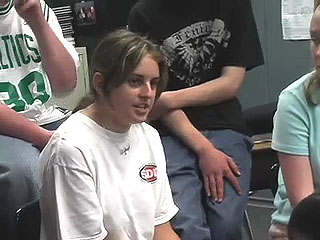



Learning Prep: Students as Independent Thinkers
West Newton, Massachusetts
Students must grow into independent learners; the role of a teacher is to facilitate the transfer of knowledge that makes this goal possible. Since most learning across the curriculum involves reading at various levels, comprehension strategies are particularly important, yet they are rarely taught in a regular classroom; it is assumed that students intuitively know how to understand what they are reading and that comprehension is an automatic skill. In addition, most textbooks
present knowledge in a linear mode; in order for students to be able to perceive nonlinear relationships, teachers must take advantage of newer, visual approaches (Chang, Sung, and Chen, 2002, 5).
A comprehension strategy promoted by Fournier and Graves is scaffolding, or "providing support to help learners bridge the gap between what they know and can do and the intended goal" (2002, 31). According to Bransford, Brown, and Cocking, scaffolding is one of the most effective instructional procedures. When teachers utilize scaffolding techniques in the classroom, they will cue, question, coach, corroborate, and provide basic information. If it were not for the teachers' facilitation, students would not otherwise be able to complete a task or activity by themselves (Fournier and Graves, 2002, 31).

Gail O'Meara, the Elementary Principal at Learning Prep, shares how Thinking Maps are an effective language with students and teachers.
![]() Watch the video clip in Quicktime (13:56)
Watch the video clip in Quicktime (13:56)
For many learning disabled students, scaffolding alone is not adequate. Visuals can be an additional, powerful tool to help process and link facts with events. One visual tool that has been proven to work for over thirty years is the graphic organizer; this successful strategy helps sort information and breaks it down into manageable pieces which can then be processed by passive learners. Graphic organizers clearly portray connections between main categories and sub-categories that textbooks fail to establish explicitly (DiCecco and Gleason, 2002, 306). Research confirms their effectiveness when utilized in curriculum planning, assessment, determining student knowledge and misconceptions, and evaluating learning as well as instruction. They enable students and teachers to have an overall snapshot and make connections between concepts, ideas, or categories; another benefit is their flexibility and their ability to be modified or added to as necessary. Graphic organizers can be completed by each student working alone or in groups, or they can be used by an educator to teach a lesson (Irwin-DeVitis, Modle, and
Bromley, 1990, 54-57). By creating these visual tools, students become "the engineers of their own investigation" (Irwin-DeVitis, Modle, and Bromley, 1990, 54). Irwin-DeVitis, Modle, and Bromley list six ways in which a teacher can make graphic organizers work in the classroom (1990, 54-57):
- Plan your teaching.
- Tap into students' interests.
- Uncover misconceptions.
- Record data.
- Assess learning.
- Evaluate your instruction.

1 David Hyerle talks with students about Thinking Maps and thinking.
![]() Watch the video clip in Quicktime (4:25)
Watch the video clip in Quicktime (4:25)
2 Learning Prep 10th grade students share their thoughts on thinking and Thinking Maps.
![]() Watch the video clip in Quicktime (8:17)
Watch the video clip in Quicktime (8:17)
Chang, Sung, and Chen (2002, 5-6) consider graphic organizers to be a highly beneficial, spatial learning strategy. They affirm that: the structure of the whole text and the interrelations between concepts are illustrated with a visual method that gives the readers a clearer, more substantial understanding of what is being read.. . . Text structure and content is easier to retain and retrieve.. . ; impressive results [are achieved] in assisting the reader in memorization and comprehension of text content.
Download the Improving Reading Comprehension Through Visual Tools Thesis by Cynthia Manning
- Thesis Summary (pdf file)
- Complete Thesis (pdf file)